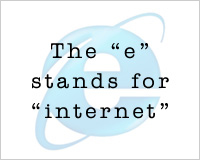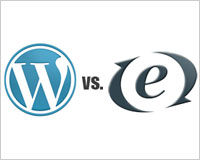 As 2010 draws to an end, we're taking a moment to look back at some of our most popular posts of the year.
2011 will finally see a much overdue redesign of WDD and we also have another great website for designers that will be released in early 2011, which is something to get excited about!
On behalf of myself and the entire WDD team, I'd like to thank each of you for your ongoing support and loyalty. You truly helped us build an amazing WDD with all your emails, your ideas, comments and suggestions. Big thanks!
Now let's revisit the top 20 WDD posts that made a big splash in 2010. The most popular post appears at the top of the list, with the other posts being sorted chronologically.
Wishing you all a happy and successful 2011!
As 2010 draws to an end, we're taking a moment to look back at some of our most popular posts of the year.
2011 will finally see a much overdue redesign of WDD and we also have another great website for designers that will be released in early 2011, which is something to get excited about!
On behalf of myself and the entire WDD team, I'd like to thank each of you for your ongoing support and loyalty. You truly helped us build an amazing WDD with all your emails, your ideas, comments and suggestions. Big thanks!
Now let's revisit the top 20 WDD posts that made a big splash in 2010. The most popular post appears at the top of the list, with the other posts being sorted chronologically.
Wishing you all a happy and successful 2011!
1. 7 Reasons Why I Choose Fireworks Over Photoshop
 My name is Russell McGovern and I use Fireworks to design websites. There, I said it. I could be wrong, but it feels like I’m in a small minority; among web designers, the application of choice seems to be Photoshop.
Agencies send me PSD files at work and ask for them in return; design blogs are full of Photoshop tips, tutorials and templates; other designers request the Photoshop files that they assume I must have used to build elements.
It’s almost like being a second-class citizen. It’s like the only tool a truly professional designer would dream of using is Photoshop—the software equivalent of choosing a Mac over a PC.
Yet Photoshop is not the only option. I’ve used Fireworks for many years now and find it to be by far the easiest and fastest way to get ideas out of my head and into pixels on the screen.
My name is Russell McGovern and I use Fireworks to design websites. There, I said it. I could be wrong, but it feels like I’m in a small minority; among web designers, the application of choice seems to be Photoshop.
Agencies send me PSD files at work and ask for them in return; design blogs are full of Photoshop tips, tutorials and templates; other designers request the Photoshop files that they assume I must have used to build elements.
It’s almost like being a second-class citizen. It’s like the only tool a truly professional designer would dream of using is Photoshop—the software equivalent of choosing a Mac over a PC.
Yet Photoshop is not the only option. I’ve used Fireworks for many years now and find it to be by far the easiest and fastest way to get ideas out of my head and into pixels on the screen.
2. How to Make an Internet Web Page
 Do you browse the internet often? Are you amazed at how many internet web pages there are in the world today? Don’t you wish you could get a piece of that action?
You’re probably thinking that in order to build an internet web page, you have to be some kind of computer genius. You probably think you have to go to college for at least one year to learn to make internet web pages.
Well, that used to be true, but not anymore. I’m going to show you how you can create an internet web page today in just a matter of minutes — even if you’ve never been trained in any kind of electronic technology. That’s right — you don’t have to be a 1-year college graduate or any other kind of electronic genius.
Just follow the step-by-step instructions described in this article, and you’ll have your very own internet web page for everyone to see.
Do you browse the internet often? Are you amazed at how many internet web pages there are in the world today? Don’t you wish you could get a piece of that action?
You’re probably thinking that in order to build an internet web page, you have to be some kind of computer genius. You probably think you have to go to college for at least one year to learn to make internet web pages.
Well, that used to be true, but not anymore. I’m going to show you how you can create an internet web page today in just a matter of minutes — even if you’ve never been trained in any kind of electronic technology. That’s right — you don’t have to be a 1-year college graduate or any other kind of electronic genius.
Just follow the step-by-step instructions described in this article, and you’ll have your very own internet web page for everyone to see.
3. WordPress vs. ExpressionEngine: Apples and Oranges?
 This post has been a long time coming. Whether on Twitter or in the blogosphere, the question often arises, and I have been asked numerous times for my opinion on the ExpressionEngine vs. WordPress debate, and why one would choose one content management system (CMS) over the other.
My usual answer is that they cannot be compared. While WordPress had made huge strides in usability, for anything other than a blog it is an apple.
ExpressionEngine, with the release of version 2.0, makes for a lovely platform that is, as we will see, an orange.
This post has been a long time coming. Whether on Twitter or in the blogosphere, the question often arises, and I have been asked numerous times for my opinion on the ExpressionEngine vs. WordPress debate, and why one would choose one content management system (CMS) over the other.
My usual answer is that they cannot be compared. While WordPress had made huge strides in usability, for anything other than a blog it is an apple.
ExpressionEngine, with the release of version 2.0, makes for a lovely platform that is, as we will see, an orange.
4. 20 Years of Adobe Photoshop
 Photoshop has been a part of every web designer’s life since they picked up their first mouse.
On February 10th, 2010, Photoshop turns twenty. To mark this anniversary, we’ve come up with an article that takes you through the evolution of Photoshop from its modest beginnings as a bundled program sold with scanners to its current version.
For each version and major feature listed, we couldn’t help but think “did Photoshop ever exist without that feature?”.
Some of the minor details are fun too, such as the one-liner Easter Eggs that Photoshop developers hid in some versions and the fact that the most current versions of Adobe Photoshop CS are equipped with anti-counterfeiting measures for multiple world currencies.
Please join us in thanking the Knolls and Adobe for making all of our lives more awesome, every day.
Photoshop has been a part of every web designer’s life since they picked up their first mouse.
On February 10th, 2010, Photoshop turns twenty. To mark this anniversary, we’ve come up with an article that takes you through the evolution of Photoshop from its modest beginnings as a bundled program sold with scanners to its current version.
For each version and major feature listed, we couldn’t help but think “did Photoshop ever exist without that feature?”.
Some of the minor details are fun too, such as the one-liner Easter Eggs that Photoshop developers hid in some versions and the fact that the most current versions of Adobe Photoshop CS are equipped with anti-counterfeiting measures for multiple world currencies.
Please join us in thanking the Knolls and Adobe for making all of our lives more awesome, every day.
5. How to Kill the Design Community
 Recently, the notion of killing the design community has come up on a few blogs (sometimes indirectly), creating many intense conversations on the direction the design community has taken over the past couple of years, and what can be done about it.
The possibility that such discussions are going to improve the design community is quite troubling.
In the interests of taking advantage of this recent trend (namely, writing about “killing the community”), I felt it would be necessary to address this issue by describing some easy-to-learn and practical tips that will help all of us do our part in killing the community.
Recently, the notion of killing the design community has come up on a few blogs (sometimes indirectly), creating many intense conversations on the direction the design community has taken over the past couple of years, and what can be done about it.
The possibility that such discussions are going to improve the design community is quite troubling.
In the interests of taking advantage of this recent trend (namely, writing about “killing the community”), I felt it would be necessary to address this issue by describing some easy-to-learn and practical tips that will help all of us do our part in killing the community.
6. A Showcase of Minimalist Workstations
 No matter what your personal work style, an uncluttered and attractive workspace will improve the quality and efficiency of your work.
Getting rid of paper, digitizing your business cards, minimizing your office supplies are just some of the measures you can take to declutter your workspace and redesign your work life.
Working in an aesthetically pleasing and minimalist workspace enhances your creativity and focus.
Eliminate anything you don’t need, and you’ll have less of a visual distraction. We have enough online distractions; shouldn’t we be limiting the physical ones as well?
No matter what your personal work style, an uncluttered and attractive workspace will improve the quality and efficiency of your work.
Getting rid of paper, digitizing your business cards, minimizing your office supplies are just some of the measures you can take to declutter your workspace and redesign your work life.
Working in an aesthetically pleasing and minimalist workspace enhances your creativity and focus.
Eliminate anything you don’t need, and you’ll have less of a visual distraction. We have enough online distractions; shouldn’t we be limiting the physical ones as well?The minimalist zen like work spaces that we’ve collected below can inspire you to create a clean design for your environment that meshes with the beautiful work that you do online.
7. The Myth of DPI
8. Design Around the World: Metro Maps
 Every city looks and feels unique. Regional culture, typography, dialect, local customs and many more factors play a part in defining a city’s differences.
Those differences determine how that city sees its citizens and how it wants to represent itself to others.
For each city with one, the metro plays a part in defining those differences. The metro maps in this post show the skeletons of these cities. Each map explores the paths taken by the residents of that city.
The design and style of the maps appears reflective of the particular place. They may be seen as not only maps, but individual expressions of a local identity.
Every city looks and feels unique. Regional culture, typography, dialect, local customs and many more factors play a part in defining a city’s differences.
Those differences determine how that city sees its citizens and how it wants to represent itself to others.
For each city with one, the metro plays a part in defining those differences. The metro maps in this post show the skeletons of these cities. Each map explores the paths taken by the residents of that city.
The design and style of the maps appears reflective of the particular place. They may be seen as not only maps, but individual expressions of a local identity.Here’s a great compilation of metro maps from around the world…
9. 20 Reasons You Shouldn’t Be a Freelancer
 We’ve all read countless articles on the reasons you should consider freelancing.
They often make it out like anyone still working in the corporate world is just a schmuck with no ambition. But the truth is, there are plenty of reasons not to start freelancing.
Below are twenty such reasons, all laid out so you can make an informed decision about whether freelancing is really something you want to do in your career.
There’s nothing wrong with staying in a corporate job, just as there’s nothing wrong with setting out on your own. But it’s a choice every designer and developer needs to make for themselves.
One note: when we talk about “corporate jobs”, we’re talking mostly about design firms with multiple employees (whether they’re corporations or not), but most of it also applies to in-house design teams at large companies.
We’ve all read countless articles on the reasons you should consider freelancing.
They often make it out like anyone still working in the corporate world is just a schmuck with no ambition. But the truth is, there are plenty of reasons not to start freelancing.
Below are twenty such reasons, all laid out so you can make an informed decision about whether freelancing is really something you want to do in your career.
There’s nothing wrong with staying in a corporate job, just as there’s nothing wrong with setting out on your own. But it’s a choice every designer and developer needs to make for themselves.
One note: when we talk about “corporate jobs”, we’re talking mostly about design firms with multiple employees (whether they’re corporations or not), but most of it also applies to in-house design teams at large companies.
10. The World’s Most Beautiful Bridges
 Today’s bridges not only symbolize our world’s advancement in design but its advancement in technology as well.
Consequently, architects and engineers have been able to merge design and technology together in order to create bridges that are bigger, better, and more spectacular than ever before.
Several of these are simply stunning – a true marvel of classic engineering capabilities and the outstanding achievements of modern engineering.
We’ve compiled a list of 50 of the world’s most amazing bridges, both young and old. If we’ve missed and of your favorites, please feel free to add them in the comments area below… Enjoy!
Today’s bridges not only symbolize our world’s advancement in design but its advancement in technology as well.
Consequently, architects and engineers have been able to merge design and technology together in order to create bridges that are bigger, better, and more spectacular than ever before.
Several of these are simply stunning – a true marvel of classic engineering capabilities and the outstanding achievements of modern engineering.
We’ve compiled a list of 50 of the world’s most amazing bridges, both young and old. If we’ve missed and of your favorites, please feel free to add them in the comments area below… Enjoy!
11. Create Great Websites, Without Any SEO
 Search Engine Optimization, also known as SEO is a subject which gets talked about to death all over the web.
There’s a fairly large group of people who believe that SEO is the be-all and end-all to anything on the web.
They believe that without it, you are nothing and with it, you are everything.
Today we’re going to look at why that isn’t true and why you can create a truly great website which performs well in search engines, without any seedy SEO tactics.
We’ve also included a case study of WooThemes and QA with Adii Pienaar and his views on SEO.
Search Engine Optimization, also known as SEO is a subject which gets talked about to death all over the web.
There’s a fairly large group of people who believe that SEO is the be-all and end-all to anything on the web.
They believe that without it, you are nothing and with it, you are everything.
Today we’re going to look at why that isn’t true and why you can create a truly great website which performs well in search engines, without any seedy SEO tactics.
We’ve also included a case study of WooThemes and QA with Adii Pienaar and his views on SEO.
12. Blast from the Past: Vintage Technologies That We No Longer Use
 Most of the technologies that we have used in the past have been eclipsed by the remarkable technology that we use today.
Advances in their design have occurred in tandem with the advances in technology in this digital era, with many large products being redesigned and miniaturized into amazingly small sizes.
While we may laugh at the fact that anyone ever found this technology to be cutting-edge, we can’t discount its place in history as a forerunner for all of the technology that wouldn’t exist today without its dinosaur ancestry.
Here is a quick look through history at vintage technologies that we no longer use.
Most of the technologies that we have used in the past have been eclipsed by the remarkable technology that we use today.
Advances in their design have occurred in tandem with the advances in technology in this digital era, with many large products being redesigned and miniaturized into amazingly small sizes.
While we may laugh at the fact that anyone ever found this technology to be cutting-edge, we can’t discount its place in history as a forerunner for all of the technology that wouldn’t exist today without its dinosaur ancestry.
Here is a quick look through history at vintage technologies that we no longer use.
13. A Collection of “Coming Soon” Web Pages
 “Coming soon” pages are a great way for websites to engage and connect with visitors, even before the actual site is published.
A well designed “coming soon” page is a great teaser to grab the attention of potential visitors and make them look forward to the website’s launch.
These pages usually include a short sign up form or social media links to notify visitors of updates and the release date.
From minimalist approaches, to elaborate illustrations, there are virtually unlimited ways to create an eye catching design for these website teasers.
In this post, you’ll find a great collection of “coming soon” pages that you can use for inspiration when designing your own.
“Coming soon” pages are a great way for websites to engage and connect with visitors, even before the actual site is published.
A well designed “coming soon” page is a great teaser to grab the attention of potential visitors and make them look forward to the website’s launch.
These pages usually include a short sign up form or social media links to notify visitors of updates and the release date.
From minimalist approaches, to elaborate illustrations, there are virtually unlimited ways to create an eye catching design for these website teasers.
In this post, you’ll find a great collection of “coming soon” pages that you can use for inspiration when designing your own.
14. 7 Personality Types of Designers Today
 Design is a universal language. It transcends all cultural and national boundaries. It is diverse and ever-changing. Despite the fact that designs can be universally appreciated, the artists behind them are all unique and talented individuals.
What kind of designer are you? What is your philosophy? How do you contribute to the design community? Designers from different walks of life might have similar answers to these questions, and yet we are all different.
Some designers take it upon themselves to educate those who have not yet developed an appreciation for Web design and art. Some designers aim to improve the overall quality of design on the Internet.
And of course, some designers strive primarily to make a good living from their talents so that they can live a comfortable life.
Design is a universal language. It transcends all cultural and national boundaries. It is diverse and ever-changing. Despite the fact that designs can be universally appreciated, the artists behind them are all unique and talented individuals.
What kind of designer are you? What is your philosophy? How do you contribute to the design community? Designers from different walks of life might have similar answers to these questions, and yet we are all different.
Some designers take it upon themselves to educate those who have not yet developed an appreciation for Web design and art. Some designers aim to improve the overall quality of design on the Internet.
And of course, some designers strive primarily to make a good living from their talents so that they can live a comfortable life.
15. How to Grow as a Web Designer
 The field of web design is constantly changing and growing.
Getting in a rut is often the result of not staying up to date with the latest trends and technologies in the industry. Even if we do stay up to date, many of us at one time or another feel anxious about whether we’re advancing.
If you’re at a firm, you may be working towards a raise or promotion, or perhaps you’re thinking of jumping ship to a bigger and better company.
For the freelancers out there, we of course determine our own destiny; but far too often our careers feel stagnant, too.
This article goes over some ways to reignite your growth as a web designer.
The field of web design is constantly changing and growing.
Getting in a rut is often the result of not staying up to date with the latest trends and technologies in the industry. Even if we do stay up to date, many of us at one time or another feel anxious about whether we’re advancing.
If you’re at a firm, you may be working towards a raise or promotion, or perhaps you’re thinking of jumping ship to a bigger and better company.
For the freelancers out there, we of course determine our own destiny; but far too often our careers feel stagnant, too.
This article goes over some ways to reignite your growth as a web designer.
16. You’re Failing as a Web Developer — and Here’s Why
 There is endless content available in the world of web design blogging telling us how to do things right, and how to succeed at our chosen profession.
That’s obviously a good thing, and it will certainly continue that way. But once in a while we need reminders on the things we do (or fail to do) that are negative.
That is, things that can have a detrimental impact on our progress as designers and developers — despite that these things may be temporarily helping us pay the bills and keep us afloat financially.
We all need to analyze our situation and assess whether or not we’re forming healthy design and coding habits, and whether those habits could be providing short-term gains that are not conducive to long-term success.
So, take this information with a grain of salt (because I know some of it is highly debatable) and consider whether or not you personally are doing anything that could prevent you from having a job in five years.
There is endless content available in the world of web design blogging telling us how to do things right, and how to succeed at our chosen profession.
That’s obviously a good thing, and it will certainly continue that way. But once in a while we need reminders on the things we do (or fail to do) that are negative.
That is, things that can have a detrimental impact on our progress as designers and developers — despite that these things may be temporarily helping us pay the bills and keep us afloat financially.
We all need to analyze our situation and assess whether or not we’re forming healthy design and coding habits, and whether those habits could be providing short-term gains that are not conducive to long-term success.
So, take this information with a grain of salt (because I know some of it is highly debatable) and consider whether or not you personally are doing anything that could prevent you from having a job in five years.
17. 40 Excellent Websites Showcasing Expression Engine
 ExpressionEngine by EllisLab is a powerful, flexible content management system (CMS) that many designers (and their clients) love.
Various modules exist to allow EE to be used for a number of different purposes, such as membership sites, ecommerce, blogs, wikis, and much more.
Many of the most popular modules come with the personal ($99.95) and commercial ($249.95) licenses, and additional modules are available.
The sites featured here show the flexibility of Expression Engine in their varying design and purpose.
EE allows designers to have the freedom to create layouts without restrictions, which helps to it to be a productive CMS for so many different purposes, check it out.
ExpressionEngine by EllisLab is a powerful, flexible content management system (CMS) that many designers (and their clients) love.
Various modules exist to allow EE to be used for a number of different purposes, such as membership sites, ecommerce, blogs, wikis, and much more.
Many of the most popular modules come with the personal ($99.95) and commercial ($249.95) licenses, and additional modules are available.
The sites featured here show the flexibility of Expression Engine in their varying design and purpose.
EE allows designers to have the freedom to create layouts without restrictions, which helps to it to be a productive CMS for so many different purposes, check it out.
18. Web Design Trends for 2010
 Purists will say that great design is timeless. Yes, in an ideal world, we should ignore trends.
Pragmatically speaking, though, there is a lot of value in monitoring and incorporating design trends, especially with regard to websites.
Let’s face it: the web changes at a rapid pace. Unlike in other media, design trends on the web are not just driven by aesthetics.
Technology is changing that can drastically alter the capabilities of the medium.
In 2010, we’re seeing designers continuing to push the boundaries of web design, setting the following clear trends…
Purists will say that great design is timeless. Yes, in an ideal world, we should ignore trends.
Pragmatically speaking, though, there is a lot of value in monitoring and incorporating design trends, especially with regard to websites.
Let’s face it: the web changes at a rapid pace. Unlike in other media, design trends on the web are not just driven by aesthetics.
Technology is changing that can drastically alter the capabilities of the medium.
In 2010, we’re seeing designers continuing to push the boundaries of web design, setting the following clear trends…
19. 60+ Awesome New WordPress Themes
 It seems like every time you go looking for a new WordPress theme, you find countless roundups of the same old themes.
And while many of those themes are featured for good reason, they’re also used on countless blogs around the web. We’ve all seen them a hundred times.
But WordPress themes are being released on nearly a daily basis. Not all of them are great, but plenty of them are.
Below are more than 60 of those great themes, none older than October of 2009 and many from as recent as this month.
Have we missed any good ones released recently? Please add them at the end of this article.
It seems like every time you go looking for a new WordPress theme, you find countless roundups of the same old themes.
And while many of those themes are featured for good reason, they’re also used on countless blogs around the web. We’ve all seen them a hundred times.
But WordPress themes are being released on nearly a daily basis. Not all of them are great, but plenty of them are.
Below are more than 60 of those great themes, none older than October of 2009 and many from as recent as this month.
Have we missed any good ones released recently? Please add them at the end of this article.
20. 7 Personality Types of Developers Today
 Developers and programmers are meticulous individuals, and developers sometimes stand out even among themselves.
We introduced you to 7 types of designers in our article 7 Personality Types of Designers Today. Developers have peculiar traits and habits of their own. This article looks at 7 types of developers today and their defining characteristics.
“The best programmers are not marginally better than merely good ones. They are an order of magnitude better, measured by whatever standard: conceptual creativity, speed, ingenuity of design or problem-solving ability.”
Developers and programmers are meticulous individuals, and developers sometimes stand out even among themselves.
We introduced you to 7 types of designers in our article 7 Personality Types of Designers Today. Developers have peculiar traits and habits of their own. This article looks at 7 types of developers today and their defining characteristics.
“The best programmers are not marginally better than merely good ones. They are an order of magnitude better, measured by whatever standard: conceptual creativity, speed, ingenuity of design or problem-solving ability.”—Randall E. Stross Stereotyping is generally not good practice. But we’re not trying to squeeze individuals into categories. Rather, delineating these types can help you figure out where you stand and help you understand others. What type of posts would you like to see mostly in 2011 and which ones were your favorites in 2010? Please share your thoughts below...
WDD Staff
WDD staff are proud to be able to bring you this daily blog about web design and development. If there's something you think we should be talking about let us know @DesignerDepot.
Read Next
15 Best New Fonts, July 2024
Welcome to our monthly roundup of the best fonts we’ve found online in the last four weeks. This month, there are fewer…
By Ben Moss
20 Best New Websites, July 2024
Welcome to July’s round up of websites to inspire you. This month’s collection ranges from the most stripped-back…
Top 7 WordPress Plugins for 2024: Enhance Your Site's Performance
WordPress is a hands-down favorite of website designers and developers. Renowned for its flexibility and ease of use,…
By WDD Staff
Exciting New Tools for Designers, July 2024
Welcome to this July’s collection of tools, gathered from around the web over the past month. We hope you’ll find…
3 Essential Design Trends, July 2024
Add some summer sizzle to your design projects with trendy website elements. Learn what's trending and how to use these…
15 Best New Fonts, June 2024
Welcome to our roundup of the best new fonts we’ve found online in the last month. This month, there are notably fewer…
By Ben Moss
20 Best New Websites, June 2024
Arranging content in an easily accessible way is the backbone of any user-friendly website. A good website will present…
Exciting New Tools for Designers, June 2024
In this month’s roundup of the best tools for web designers and developers, we’ll explore a range of new and noteworthy…
3 Essential Design Trends, June 2024
Summer is off to a fun start with some highly dramatic website design trends showing up in projects. Let's dive in!
15 Best New Fonts, May 2024
In this month’s edition, there are lots of historically-inspired typefaces, more of the growing trend for French…
By Ben Moss
How to Reduce The Carbon Footprint of Your Website
On average, a web page produces 4.61 grams of CO2 for every page view; for whole sites, that amounts to hundreds of KG…
By Simon Sterne
20 Best New Websites, May 2024
Welcome to May’s compilation of the best sites on the web. This month we’re focused on color for younger humans,…














